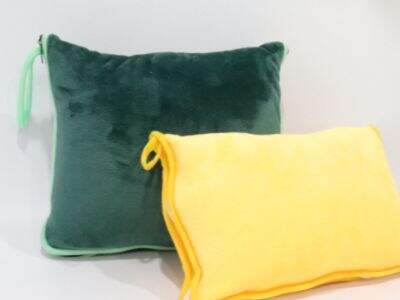Ტანსაცმლისთვის, ჩვენ უნდა გავაცნობიეროთ ორი ძირითადი პროცესი: ქსოვა და ქსოვა. ამ პროცესების შედეგად სხვადასხვა ტიპის ქსოვილი წარმოიქმნება, რომელთაგან თითოეულს ყოველდღიურ ცხოვრებაში ვიყენებთ. ქსოვის მეთოდი: სადაც ქსოვილი მზადდება ორი ნაკრების წებოს ერთმანეთში გადახლართვით სწორ კუთხეში. ეს ნიშნავს, რომ ერთი ნაკრები ძაფები ადის და ქვემოთ, ხოლო მეორე ნაკრები გვერდიგვერდ. ყველა ეს ძაფები ერთად კარგ ქსოვილს ქმნიან. ტყავი - მკერდი ტრიკტირებისას ერთი თხილი იჭერს და იჭერს ერთმანეთთან მიბმულ ბოჭკებს. ბამბის და სპანდექსის ნაზავი
Ტექსტილის ბოჭკოების სახეობები
Მეორე, განვიხილავთ განსხვავებულ მასალებს, რომლებიც გამოიყენება ამ ტექსტურების შესაქმნელად. ჩვენ ასეთ მასალებს ვუწოდებთ მასალის ფილამენტებს. ფილამენტები არის ის, რაც შედის ტექსტურაში, და იმაზე მეტი იცვლებით ფილამენტებზე და იმის მიხედვით, რამდენად მძლავრი და მỀრი ისინია, იმაზე მეტი იცვლებით ტექსტურაზე. ძირითადი ფიბრის ტიპები, რომლებზეც უნდა ვიცოდეთ, არის ნატურალური ფიბრა და სინთეტიკური ფიბრა.
Ნატურიდან ასეთი ტექსტურები ნაწილია ნატურალურ ფიბრების. ისინი შეიძლება გადადგინდეს მცენარეებიდან, როგორიცაა ქალამი და მამული, ან ცხოველებიდან, როგორიცაა საღამოს მამული და სისხლი. ნატურალური ფიბრების მთავარი სასიდიერო არის ის, რომ ისინი ჩვენს კожно-დაბადებას მ俞რია და მათ კარგად ჰყავს, და უმეტესობაში ძლიერი იქნება. მაგალითად, ქალამი მ俞რია და კომფორტული, რაც ხდის მას იდეალურად ღიამოვანებისა და ღამის ინვენტარისთვის.
Დიფერენცირებულში, ინჟინრულად შექმნილი თოკები გამოიწვევენ ადამიანებმა ინდუსტრიულ ფაბრიკებზე. ასეთია პოლიესტერი, ნაილონი და სპანდექსი. მერე ხელსაწყოთა თოკების თვისებაა, რომ ისინი ძალიან მძიმე არიან, რაც ასევე ნიშნავს, რომ მათ გაქვთ ძალიან გრძელი სიცოცხლე. ისინი სწრაფად გარეთ გადგენ, რაც განსაზღვრულია იმით, რომ თუ გახდება გამოსვლილი, მათ ადვილებით მოიხსნება, რაც ხელსაწყოების და სპორტული ინვენტარის შემთხვევაში იდეალურია.
Ტექსტილის სტილის და შეხების გამოყენება
Ტექსტილის სტრუქტურა და ზედა სطაკის უფრო დაუკავშირებელი შემოწმებით ჩვენ შეგვიძლია ბევრი ინფორმაცია გავიგოთ ტექსტილის ხარისხის შესახებ. ეს შეიძლება იყოს კონსტრუქცია, რაც ნიშნავს, თუ როგორ შეიქმნა ტექსტილი, მაგრამ ყველაზე მნიშვნელოვანია — თოკის რაოდენობა. ეს აღნიშნავს, რამდენი თოკი არის ჩართული ერთ კვადრატულ ინჩში. თუ უნდა იყოს უფრო დიდი თოკის რიცხვი, მაშინ ტექსტილი ზოგადად უფრო ძალიანია და შეიძლება გრძელად გამოყენებული იყოს. მიუხედავად ბურთის:
უფრო დიდი თოკის რიცხვით მათ ტენდენცია იქნება უფრო მỀრე და ძალიანი.
Ტექსტური ზღვის ზედაპირობაც ძალიან მნიშვნელოვანი როლი თამაშობს. ზედაპირობა - ის, როგორ გახდება ტექსტურა მოწყობილობას. მეტი მკვრელი და გრძელი ტექსტურები ჩვეულებრივ მეტი ფუძევადია, რაც განაპირობა მათ დროის განმავლობაში ნაკლები გავრცელებით. საწინააღმდეგოდ, თავში უფრო ღრმად განწერილი ტექსტურა უფრო კარგად შეძლებს საწყვეტის მიღებას და შეიძლება გამოიყურებინა ნაკლები წონით, რაც გახდება მას საკმარისად მოწონარე, როდესაც ცხელია.
Цვეტებისა და მოთხოვნების შენიშვნა
Ტექსტურები ხელმისაწვდომია რამდენიმე ფერისა და დიზაინების საფუძველზე, და თქვენ უნდა შენიშნავთ ეს განსხვავებები. მცირე განსხვავებები ფერებში და თემებში შეიძლება განსაზღვროს ტექსტურის ხარისხის მრავალფეროვანი მხარე. თუ ტექსტურა მაღალი ხარისხის ფერების და მუდმივი დიზაინების მქონეა, ეს ნიშნავს, რომ ფერები ნულებით და გამოსახულია. საწინააღმდეგოდ, ნაკლები ხარისხის ტექსტურები შეიძლება ჰქონდნენ გარდაქმნილი ფერები ან უწყვეტი დიზაინები. ეს შეიძლება გახდეს ტექსტურა ნაკლებად მოწონარე და შეიძლება დააზუსტოს მისი მაღალი ხარისხი.
Ტექსტილების განსაზღვრა მოწყობილობის მიხედვით
Შეხების გამოყენება ტექსტურების ამოცნობის ერთ-ერთი სხვა კრიტიკული საშუალებაა. ტექსტურის შეხება რეგულარულად აჩვენებს მის ხარისხს. უმაღლესი ხარისხის ტექსტურები, როგორც წესი, აქვს გრძნობა ნაზი ხარისხის, გლუვი და რაღაც მდიდრული შეხება. ბევრი ჩვენგანი უყვარს ამ ტექსტურების ტარება, რადგან ჩვენ ვაფასებთ შეგრძნებას ჩვენს კანზე. უფრო მაღალი ხარისხის ტექსტურები შეიძლება იყოს უხეში, ნაპრალი ან მტკიცე. ეს შეიძლება გამოიწვიოს უხერხულობის შეგრძნება ხანგრძლივი დროის განმავლობაში.
EDITEX-ის ქსოვილები
EDITEX დაარსდა იმის რწმენით, რომ როგორც საუკეთესო მასალები უნდა იქნას გამოყენებული მაღალი ხარისხის ტექსტურების შესაქმნელად. ჩვენ ვიღებთ დიდებულ საქმეებს დრო სჭირდება და ჩვენ ყურადღებით ვირჩევთ გავრცელებულ და დამზადებულ ძაფებს, რათა ჩვენი ტექსტურები იყოს ძლიერი და შეხების საწინააღმდეგო. ჩვენ ვამზადებთ ტექსტურებს ფრთხილი სახელურით, რომელიც გარანტირებულია მათი სიმტკიცე და წლების განმავლობაში შეინარჩუნებს მათ გარეგნობას.
Ჩვენი ტექსტურები არის მაღლაც გადაკვეთის/შორების მიშენება. ეს ნიშნავს, რომ მზად ვართ განსხვავებული ტექსტურები და დიზაინები შექმნა, რაც ხდის ჩვენი ტექსტურების განსხვავებულობას. ეს გადაითარგმნის სიგნიფიკანტურად, ერთობლივად ფერი, რომელიც არის არამართებულად სასურველი და შესაბამისი განსხვავებული აპლიკაციებისთვის, როგორიცაა სახლის დეკორაცია და ოდეგი, ასევე ჩამოყალიბებული დიზაინები, რომლებიც წვდომას იძლევა ვიზუალურ ინტერესის გარკვეულ ელემენტს.

 KA
KA







































